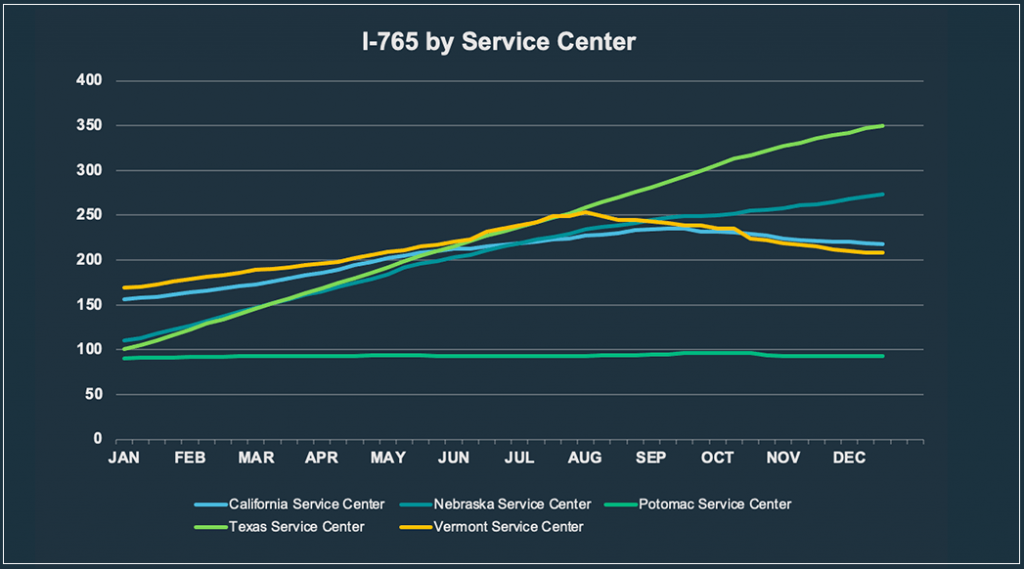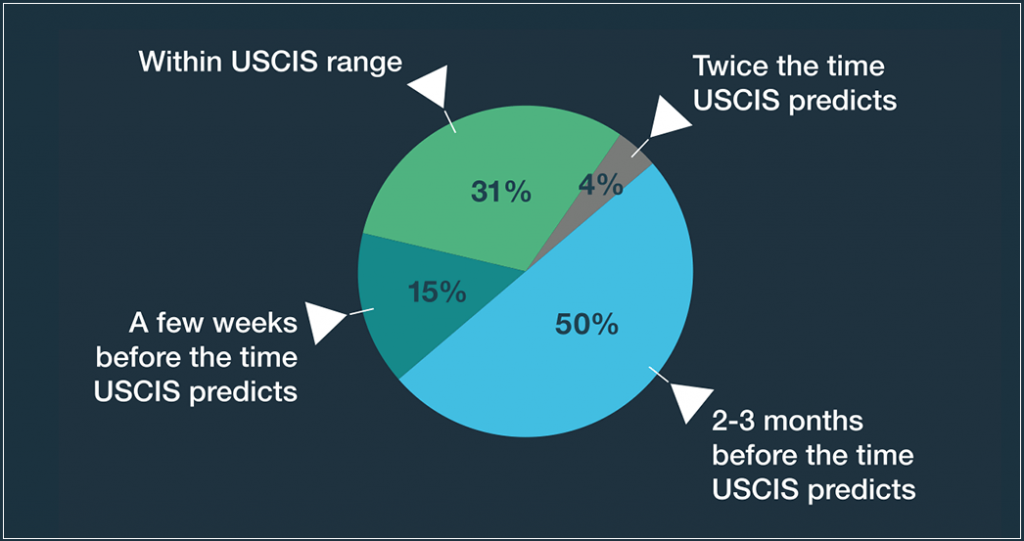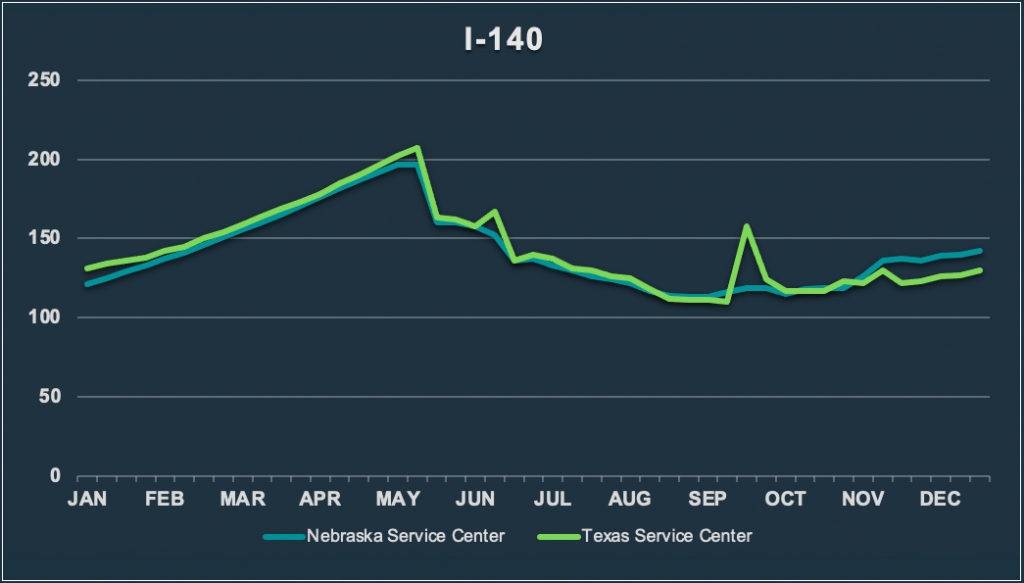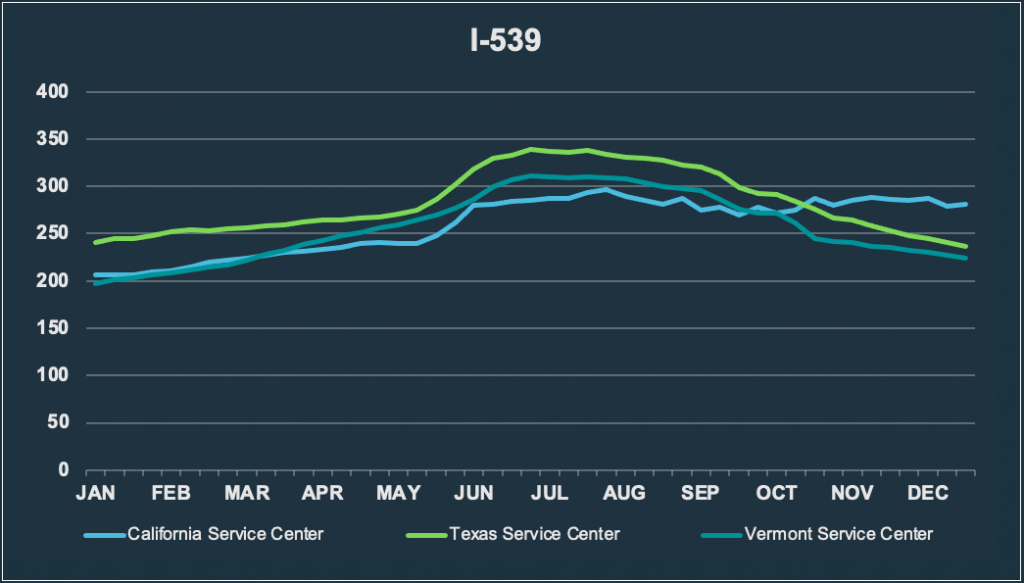
Anyone with a pending immigration application wants to know two things: Will it be approved and how long will it take? Never has this been more true than in the past two years during the pandemic when the government’s immigration case backlogs and processing delays have reached crisis levels.
Recognizing the importance of these questions for millions of applicants awaiting their decisions, BAL leveraged our 40 years of immigration experience to analyze USCIS case processing times. Our goal was to determine whether USCIS processing estimates are accurate and whether timelines are increasing or decreasing. We dug through our aggregated data based on serving millions of foreign nationals in their immigration journeys and compared it to USCIS data. Our research revealed some things that we already knew, such as our internal case processing time predictions tend to be more accurate than USCIS estimates. However, we also found some surprises, such as which case types and service center locations are most likely to experience increased processing delays.
Here, we share an FAQ to guide your expectations for USCIS processing timelines.
How accurate are USCIS estimates of how long your case will take?
USCIS publishes processing estimates for each type of case and service center. Our data reveals that USCIS predictions vary in their accuracy depending on these factors: processing methodology used, petition type, and service center location. We’ll explain more about each factor in the following questions.
What was the most compelling trend in USCIS processing in 2021?
Processing times ballooned substantially in 2021. From January 2021 to December 2021, average USCIS processing times mushroomed by a staggering 46% (from 173 days to 252 days on average) for all employment-based case types and service centers. For the Texas Service Center specifically, we have seen an increase in I-765 Application for Employment Authorization Document processing times by 350% in the last year!

How do USCIS processing time predictions compare with actual processing times?
The good news for applicants monitoring USCIS processing of their case is that, according to our data, actual processing times generally are shorter than USCIS predicts, or are consistent with the middle of the USCIS range, but are rarely longer than the published USCIS range. The accuracy of USCIS estimates seems to depend on which methodology USCIS used to calculate its estimate: processing time or cycle time. Basically “cycle time” uses aggregated data and “processing time” uses actual case data.
In 2018, USCIS updated their processing methodology from “cycle time” to “processing time” methodology for greater accuracy. Our data confirms that the updated processing time methodology is more accurate.
Which cases use the more accurate “processing time” method to estimate USCIS processing time?
The more accurate “processing time” methodology is now used to estimate processing for many case types, including Form I-140 Immigrant Petition for Alien Workers, Form I-485 Application to Register Permanent Residence or Adjust Status, and Form I-765 Application for Employment Authorization. We see that most I-140s are processed in a much shorter time period than the range that USCIS publishes. However, for both I-485s and I-765s, our data consistently falls within the middle of the USCIS predicted range.
Which cases still use the old “cycle time” method?
However, USCIS still uses the old methodology for some key case types: Petition for a Nonimmigrant Worker I-129s, Application for Travel I-131s and Application to Extend/Change Nonimmigrant Status I-539s. We see that I-129s and I-131s are consistently processed in a much shorter time period than the range that USCIS publishes. For I-539s, actual processing times are all over the place – some are much shorter than USCIS predicts, some are within range, and some are up to double even the high end of the USCIS range.
A closer look: Just how precise are USCIS estimates?
Here are the topline takeaways on USCIS estimates:
- Only 31% of the time – or less than 1 in 3 cases – did USCIS process within its estimate range.
- In 65% of cases, USCIS’ actual processing time beat its estimated time range:
- 50% of the time, USCIS processed cases 2-3 months before the earliest date in the USCIS estimate range.
- 15% of the time, USCIS actual processing times are a few weeks faster than the USCIS predicted range.
- 4% of the time, actual processing times exceed the USCIS estimate, taking twice the amount of time USCIS predicts.

Are there any predictors for consistent USCIS processing times?
Case type is a better indicating trend than service center, since there is wide variability between service center processing times. However, some case types have a wider range of processing times.
Across service centers that process I-140s, I-539s and I-129s, we generally see great consistency in the case processing timeline for the same case types and overall trends over 2021. This indicates that generally the specific case type has a larger effect on processing times than the service center adjudicating the case.


Which USCIS Service Centers process fastest?
Some service centers show greater efficiency in processing similar petitions. For instance, while the overall processing time trend for I-129s is relatively consistent across service centers over 2021, there is large variability in the actual amount of time to process, ranging from 78 days in Nebraska and Texas to 112 days in Vermont in December 2021. This means that a case could take up to 44% longer to process in Vermont than Nebraska and Texas.
Which application types are most delayed?
Applications for employment authorization are experiencing increased delays. While I-765s have consistently trended toward lengthier processing, the lag is getting worse. Averaged across all service centers and form types, processing times for I-765s are now almost two times longer than they were in the beginning of 2021. In some service centers, the delay is even worse: all forms processed in Nebraska and Texas average three times higher.
When we compare our data to that of USCIS, we see a similar pattern. Our data shows that USCIS’s overall average processing time for I-765s is worse than USCIS data indicates. Specifically, service centers like Nebraska and Texas in December 2021 were 93 and 170 days over the average reported by USCIS, respectively. So what is causing the discrepancy in USCIS data? It is likely that the lower Potomac processing times are bringing the average USCIS case processing times down when looking across all service centers.
Does the recent automatic extension of work authorization for H-4 spouses alleviate processing delays?
As you may know, USCIS recently settled a lawsuit over delays in processing applications to renew employment authorization documents (EADs) by spouses of H and L visa holders. The delays were so lengthy that the spouses’ EADs lapsed, causing them to lose their jobs. As part of the settlement, USCIS agreed to automatically extend EADs for up to 180 days for H-4 spouses filing an I-765 to renew their work authorization. However, this process isn’t always as streamlined as it sounds.
In many cases, the applicant will also need to file an I-539 to extend their H-4 status beyond its current expiration. USCIS must first adjudicate the H-4 extension before it will adjudicate the I-765. Our data shows that during 2021, USCIS has taken an average of 271 days to adjudicate an I-539 to extend H-4 status and an average of 218 days to adjudicate an I-765. While USCIS processing times for both petitions decreased at the end of 2021, they averaged more than 180 days for a full year, which further highlights USCIS’s processing time challenges.
Is there any hope for improved USCIS speed on the horizon?
Yes. We are hopeful that USCIS processing times will improve in coming years based on recommended policy changes. Besides unprecedented pandemic-related delays, USCIS is primarily hindered by antiquated paper-based systems. The DHS Office of the Inspector General recently audited USCIS, finding that reliance on manual processing hindered processing during the pandemic. The OIG pointed out that of the 102 immigration benefit types, “USCIS had limited capability to electronically process more than 80 types of benefits, which still required some manual workflows and paper files to complete cases.” Along with cumbersome manual processing, equipment challenges and budget shortages exacerbated delays.
However, efforts to digitize more USCIS processes and increase funding by expanding premium processing are gaining momentum. On September 8, 2021, DHS transmitted to Congress the report on digitizing USCIS’ workload, which outlines the 5-year strategy to fully digitize USCIS’ workload from submission, through adjudication, to completion. The report includes all three elements of this recommendation: the digitization strategy; a performance measure to track improvements in USCIS processing times; and a funding plan. We hope that with this deliberate strategy from USCIS, we will see processing times improve in the future.
Already, we are seeing positive trends for I-765 EAD processing in 2022. For instance, the Nebraska Service Center reached a high point of 311 average processing days on January 17, dropped to 259 by the end of January, and 237 by mid-February. That represents a 24% decrease from Nebraska’s highest point in January.
Similarly, the Texas Service Center reached a high point of 365 average processing days on January 17, dropped to 240 by the end of January, then 228 by mid-February. That represents a 38% decrease from Texas’s highest point in January.
What can you do to improve the processing time on your case?
Our clients all want faster USCIS case processing times, and we understand that—countless lives and the U.S. economy depend on fair and efficient USCIS decisions. While individuals may have little control over USCIS processing times, there are a few things you can do to put your case on the fastest track possible.
First, use premium processing, which should be an option for more petitions in the near future, and see if you are eligible to upgrade. If you’ve already submitted your case without premium processing, check to see if you can put in a service request to determine your USCIS case status. For help with premium processing guidance and all other strategies to expedite your application, be sure to use a knowledgeable immigration provider who will keep you informed of your USCIS status. An immigration provider with deep knowledge of immigration law, the resources to handle high caseloads, and the connections in Washington to keep clients updated on policy developments can be an invaluable partner for your immigration journey.